AMD A10-7800 Review: Testing the A10 65W Kaveri
by Ian Cutress on July 31, 2014 8:00 AM ESTGaming and Synthetics on Processor Graphics
The faster processor graphics become, the more of the low end graphics market is consumed - if the integrated graphics are better than a $50 discrete GPU, there ends up being no reason to buy a discrete GPU. This might seem a little odd for AMD, who also have a discrete GPU business. The counter argument is that integrated graphics is only comparable to low-end GPUs, which are historically low margin parts and thus might encourage users to invest in larger GPUs, especially as demands in resolution and graphical eye-candy increase. The compute side is also important, and the homologation of discrete to integrated graphics architectures helps software optimised for one also be accelerated on the other.
F1 2013
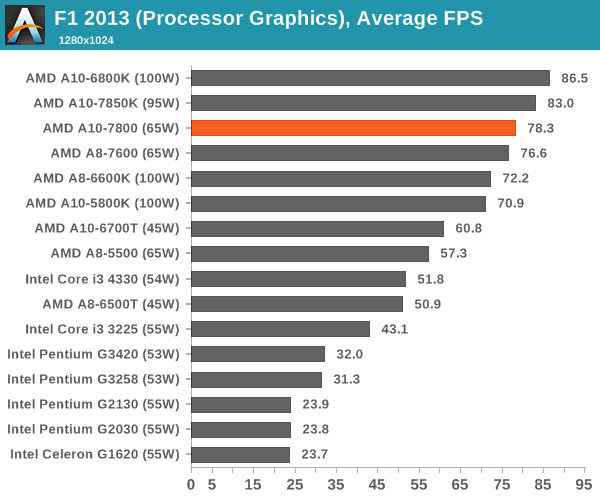
Bioshock Infinite
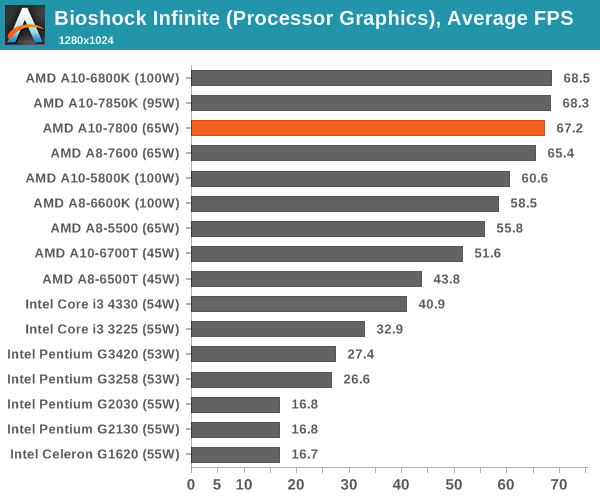
Tomb Raider
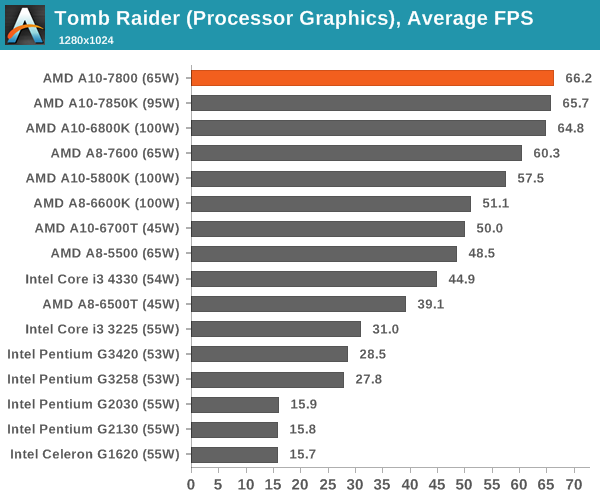
Sleeping Dogs
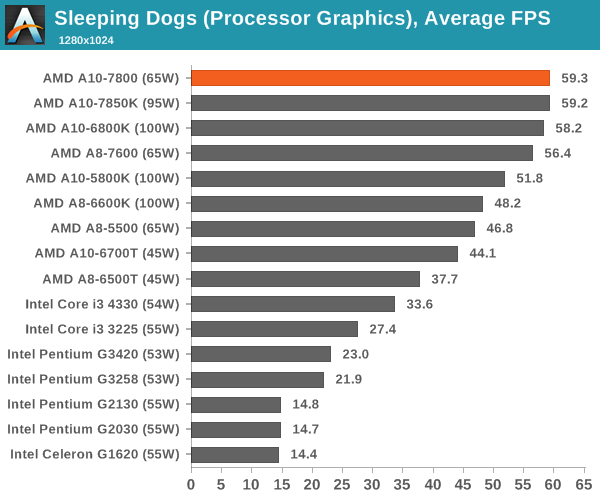
Company of Heroes 2

CompuBench 1.5
CompuBench is a new addition to our CPU benchmark suite, and as such we have only tested it on the following processors. The software uses OpenCL commands to process parallel information for a range of tests, and we use the flow management and particle simulation benchmarks here.
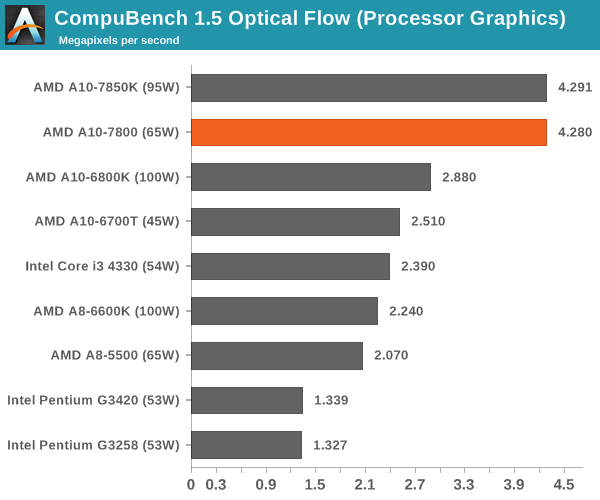
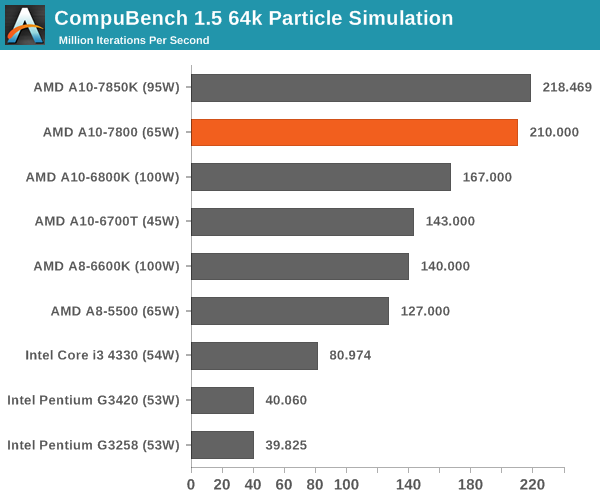
3DMark Fire Strike
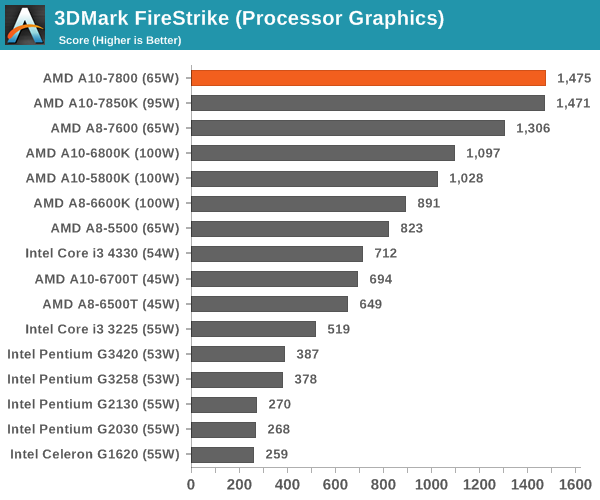
The simple answer is this: for anything related to processor graphics, AMD's Kaveri wins hands down and by a large margin in the same power envelope for cheaper.






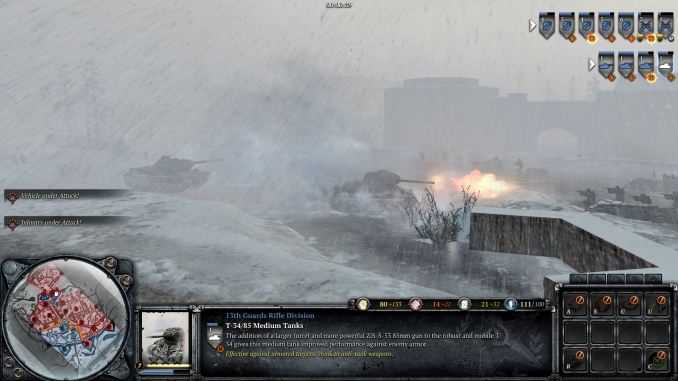








147 Comments
View All Comments
jaydee - Thursday, July 31, 2014 - link
I guess I wouldn't call something "mainstream" just because some vendors have leftover stock at non-competitive prices, but I see we have differing definitions of the word. I also wouldn't consider SCSI HDs to be "mainstream" but Newegg does a considerable stock of those as well.Don't confuse number of choices with actual popularity.
Iketh - Thursday, July 31, 2014 - link
LOL SCSI LOLOLOLOLODribble - Thursday, July 31, 2014 - link
Not a budget desktop - you'd be much better of with a cheap intel cpu and a discrete gpu. Then you got a great upgrade path to an i5, and better gpu in the future. As for extra cost of gpu, well you can get a second hand one off ebay cheap, or probably scrounge your game loving friends old one and that would still be faster then the A10.Only place these really make sense is a budget laptop, where you can't upgrade anything so need the best balanced solution upfront, but these aren't laptop chips.
Gadgety - Thursday, July 31, 2014 - link
I find that in the games benchmarked the A8-7600 isn't far behind (-2.3%; -5.8%, -8.8% and at most 11%), and sometimes even ahead (+3%) of the A10-7800, at only 2/3 of the cost. Seems to be more of a budget gaming winner, at least in terms of the price/performance ratio.joe0185 - Thursday, July 31, 2014 - link
Ian great review. One thing Id like to see on CPU reviews the inclusion of a single highend CPU and a minimum baseline CPU. In this review all the hardware was more or less in the same range so it is hard to get perspective relative to the ultra high end and the very low end. Keep it up man!Anonymous Blowhard - Thursday, July 31, 2014 - link
So can we ACTUALLY buy these low-power APUs now, or is this another paper-launch/vapor-launch?morganf - Thursday, July 31, 2014 - link
Apparently not. At least, I do not see them on newegg at the moment.Shadowmaster625 - Thursday, July 31, 2014 - link
Is there seriously no power consumption tests? wow. And there's no tests to compare kaveri vs a G3258 + a modest discrete card such as a HD7750. wow why even bother with this review, it tells us nothing. Luckily another side was a bit more competent and their data shows a 34 watt increase at the wall vs an 54W TDP i3. Shocking. All that extra power for less performance. I really want to see the data showing a G3258 + discrete outperforming kaveri in Perf/watt. Imagine the horror of spending billions of dollars to purchase a GPU company and spending and years to integrate its IP only to still be worse than your own discrete gpu combined with your competitor's CPU!takeship - Thursday, July 31, 2014 - link
From other reviews on the web, it looks like the 7800 is good for ~85w under load. Oops. No wonder performance is so close to the 7850k. Of course, maybe we'll get some anandtech numbers using a 1200w "noisy" psu eventually.silverblue - Saturday, August 2, 2014 - link
It looks as if there needs to be a simple investigation into the clock speed "sweet spot" for Kaveri. There's been the odd article on SA that shows that the top mobile APU usually performs at 2/3 the speed of the top desktop part albeit for about a third of the TDP, so it's worth proving.I did see an article earlier that hinted that the 7800 used a little less power under load at its 65W setting than the earlier 7600... http://hothardware.com/Reviews/AMD-Kaveri-Update-A...
...however, it disagrees with this article... http://www.techspot.com/review/856-amd-a10-7800-ka...
It's almost the same here (7600 wins), but look at the improvement over the previous generations... http://www.guru3d.com/articles-pages/amd-a10-7800-...